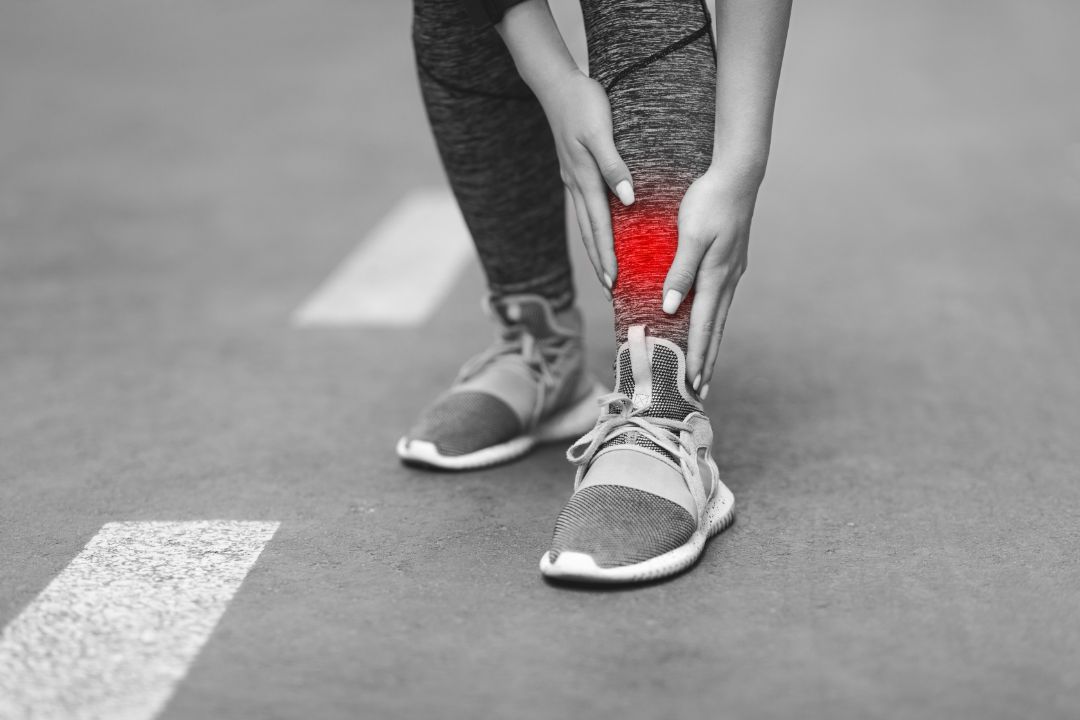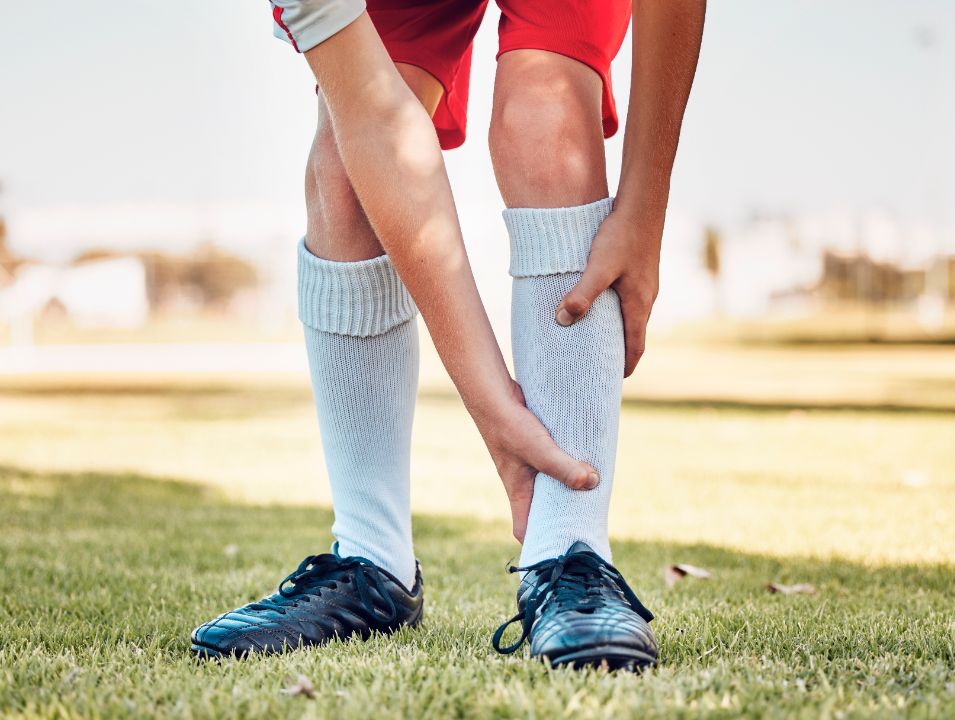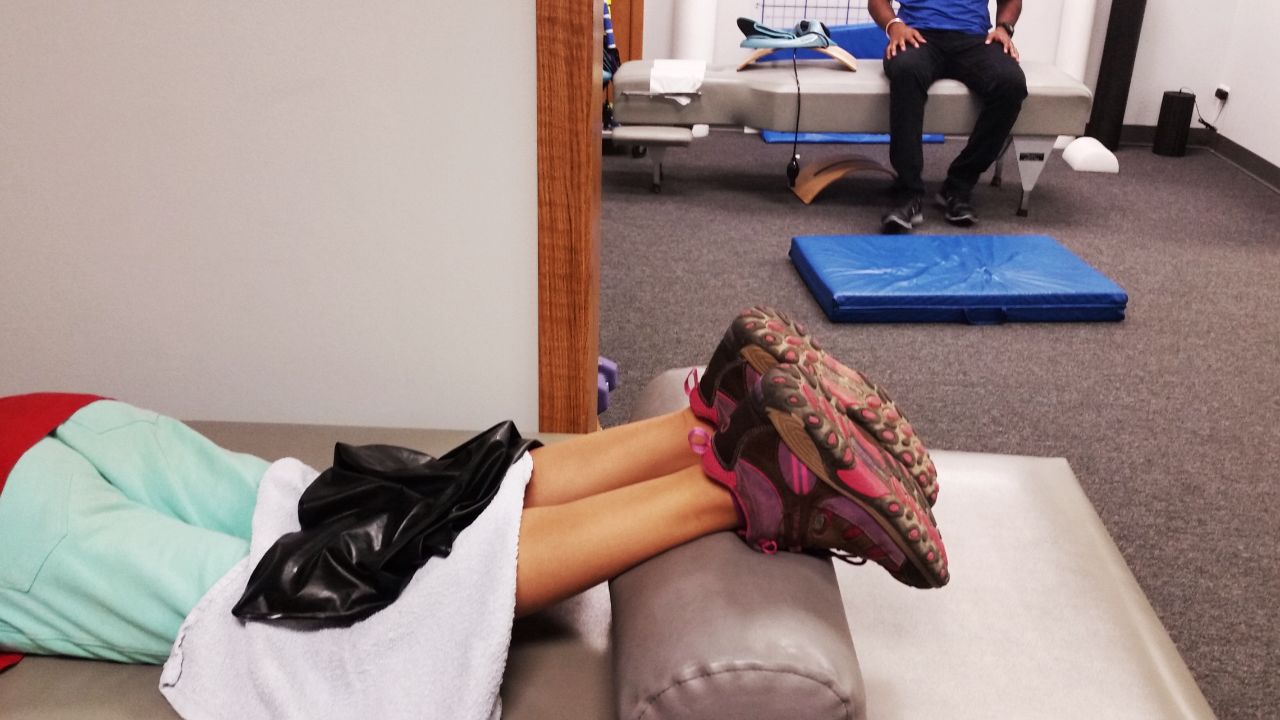Shin splints, also known as tibial stress syndrome or medial tibial stress syndrome, are painful when the muscles and tendons around the shinbone become inflamed due to repetitive stress.
The most common symptom of shin splints is a sharp or dull pain in the lower leg, along the inner border of the shinbone. The pain may occur during or after physical activity and can be aggravated by walking or running. Other symptoms may include swelling, tenderness, or redness along the affected area.
Various factors, such as overuse injuries, biomechanical issues, and bone stress, can cause shin splints. Activities that involve repetitive stress on the lower leg, such as running or jumping, can increase the risk. Biomechanical issues, such as flat feet or incorrect running technique, can also contribute to developing shin splints. Additionally, certain bone conditions, such as stress fractures, can cause shin splint-like pain.
Diagnosis of shin splints typically involves a physical examination, including gait analysis, and imaging tests such as MRI. Treatment options for shin splints may include physical therapy, orthotics, anti-inflammatory treatment, cryotherapy, and pain management techniques. Working with a sports medicine professional is important to ensure proper diagnosis and treatment.
If you’re a runner or play sports that involve a lot of running, you may have heard of shin splints. But what exactly are they?

Photo Credit: Prostock-studio, Envato
It refers to pain in the shin bone, which is also known as the tibia. The medical term for shin splints is tibial stress syndrome or medial tibial stress syndrome. The pain is usually felt along the inner part of the shin bone and is often described as a dull, aching.
There are two main types of shin splints: tibial stress syndrome and medial tibial stress syndrome. Overuse injuries cause tibial stress syndrome and is the most common type of shin splints. Medial tibial stress syndrome, on the other hand, is caused by biomechanical issues and is less common.
Shin splints are often caused by repetitive stress on the shin bone and surrounding muscles. This can happen when you increase your level of physical activity too quickly, or if you have flat feet or high arches. Other causes of shin splints include:
Shin splints are typically diagnosed through physical examination and medical history analysis. A sports medicine professional or an orthopedist usually carries out this process. The doctor will look for signs of tenderness, swelling, and pain in the affected area.
If the physician suspects it, they may order imaging tests to confirm the diagnosis. Common imaging techniques used in the diagnosis of shin splints include:
Gait analysis is another important component of diagnosing shin splints. Sports medicine professionals use gait analysis to identify biomechanical issues that might contribute to the condition. They may also recommend the use of orthotics or other supportive devices to improve the patient’s gait and reduce the risk of injury.
If you suspect you may have shin splints, it’s important to seek medical attention from a sports medicine professional or an orthopedist. They can provide an accurate diagnosis and recommend an appropriate treatment plan, including physical therapy, anti-inflammatory treatment, or cryotherapy. Failing to seek treatment can result in long-term complications, such as chronic pain or permanent damage to the affected area.

Photo Credit: YuriArcursPeopleimages, Envato
If you are suffering from this ailment, several different treatment options may help to alleviate your symptoms and promote healing. Here are some of the most effective treatment options:
Physical therapy is a commonly recommended treatment for shin splints, as it can help to strengthen the muscles in your lower legs and improve your overall biomechanics. Your physical therapist may also use techniques such as massage or stretching to help reduce pain and inflammation.
If your affliction is caused by inflammation, your doctor may recommend anti-inflammatory medication to help reduce pain and swelling. This can include non-steroidal anti-inflammatory drugs (NSAIDs) such as ibuprofen, or topical treatments such as gels or creams.
Cold therapy, such as ice packs or cold compresses, can also effectively reduce pain and inflammation in the affected area. Applying ice to the shin for 20-30 minutes a few times a day may help to relieve symptoms.
Wearing the right shoes can also help to prevent and manage these splints. Look for well-cushioned shoes that provide good support, particularly around the arch of your foot. Consider consulting with a specialist to get advice on what type of shoe would be best for you.
If your shin splints are caused by overuse or repetitive stress, your doctor or physical therapist may recommend modifying your exercise routine to reduce the strain on your legs. This could include reducing the intensity or duration of your workouts, or incorporating low-impact exercises such as swimming or cycling into your routine.
Strengthening exercises can help to improve the flexibility and stability of the muscles in your lower legs, which can help to prevent shin splints from recurring. This could include exercises such as calf raises or leg presses.
Compression bandages can help to reduce swelling and improve blood flow to the affected area. If you are using a compression bandage, ensure it is not too tight, as this can cause further damage to the muscles and tissues in your legs.
By considering these treatment options and working with a qualified healthcare professional, you can find relief from the pain of shin splints and prevent them from recurring.
Shin splints are a common condition, but there are steps you can take to reduce your risk of developing them. Here are some tips to help prevent shin splints:
Taping your shins can help provide extra support and reduce stress on your legs. A sports medicine professional can show you how to apply tape properly to prevent shin splints.

Photo Credit: rubypeanut, Envato
Cryotherapy and ice therapy can help reduce inflammation and relieve pain in your shins. Apply an ice pack to your shins for 15-20 minutes after working out to help prevent shin splints.
Improving your flexibility can help reduce the risk. Incorporate exercises such as calf raises, ankle rotations, and toe touches into your routine to help keep your shins flexible and strong.
To get rid of shin splints, you should follow these steps:
Shin splints often cause a dull, aching pain along the front or inside of the shin bone (tibia). The pain may feel like a tightness, throbbing, or tenderness, and it is usually noticeable during or after physical activity, particularly running or jumping. In some cases, the pain may be sharp or burning.
Shin splints are often triggered by overuse or repetitive stress on the lower leg, particularly during activities that involve running, jumping, or sudden changes in intensity or frequency. Other contributing factors can include inadequate warm-up, improper footwear, running on hard surfaces, muscle imbalances, and biomechanical issues.
If you experience persistent pain along the front or inside of your shin bone during or after physical activity, especially running or jumping, you may have shin splints. The pain is typically dull and aching but can vary in intensity. To confirm the diagnosis, it’s essential to consult a healthcare professional who can perform a physical examination, review your medical history, and potentially use imaging studies like X-rays or MRI scans to rule out other possible conditions and determine if shin splints are the cause of your discomfort.